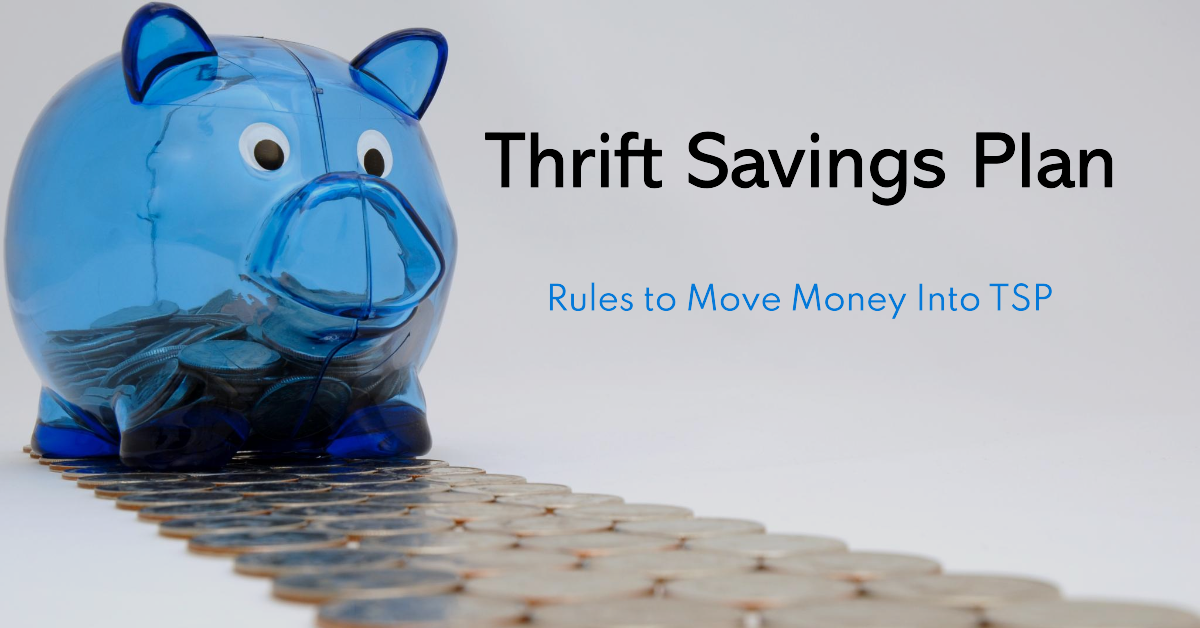Rolling Over Money Into TSP
Let’s dive into the process of transferring funds into the Thrift Savings Plan and identify the accounts eligible for consolidation. Below, you’ll find a chart detailing what can and cannot be transferred into the TSP. It’s important to note that not all retirement accounts qualify for consolidation into the TSP. For additional details, see our article on Rules to Move Money Into Thrift Savings Plan (TSP). We’ll also examine the advantages and disadvantages of transferring into the TSP, ensuring you have all the information needed to make an informed decision that aligns with your financial goals.
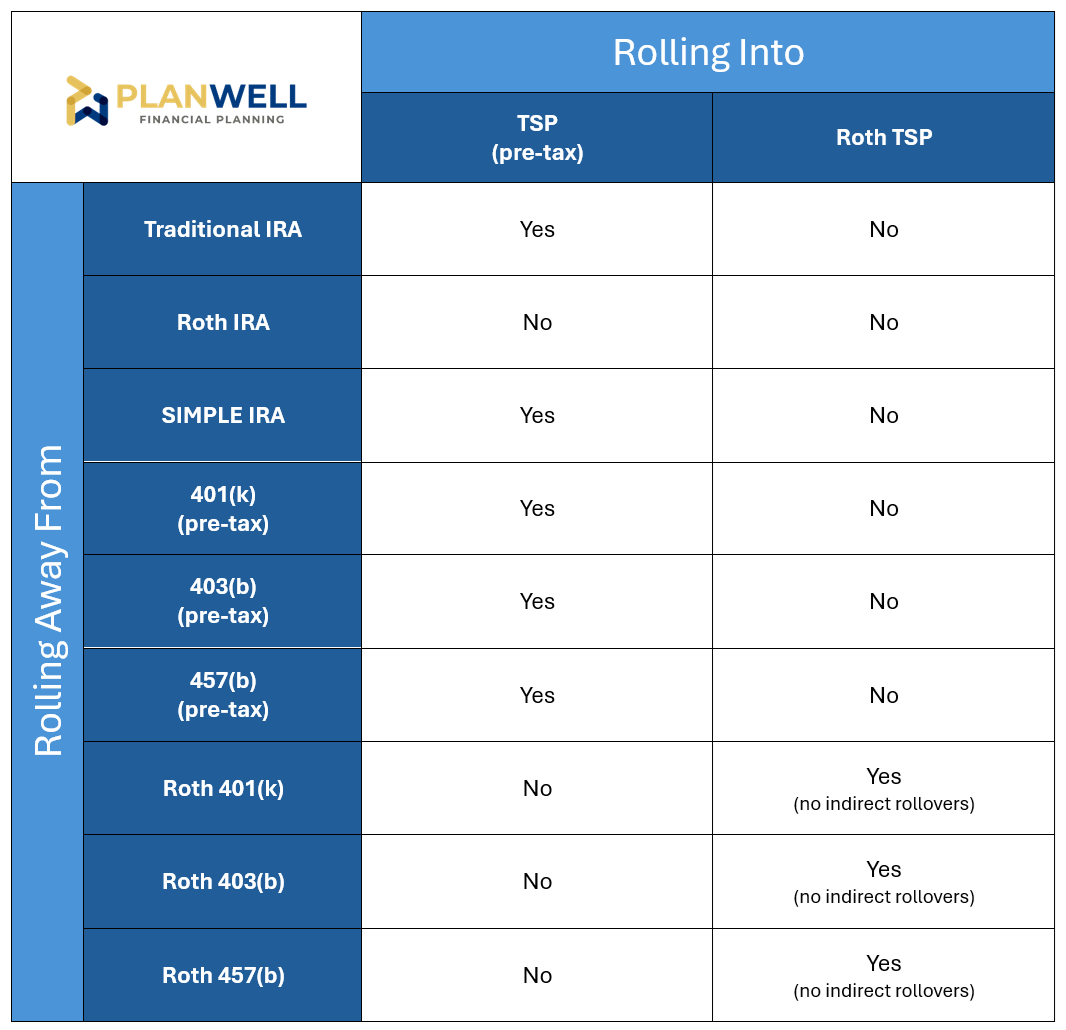
Are you looking to streamline your retirement savings and make life easier by having just one retirement account? Rolling over funds into your Thrift Savings Plan (TSP) could be the strategic move you’ve been searching for. With the flexibility to consolidate funds from various eligible retirement plans, such as a 401(k), 403(b), or traditional IRA, into your existing TSP account, you can enjoy numerous benefits that could positively impact your financial future.
Consolidation for Clarity and Growth
One significant advantage of rollover contributions to the TSP is the ability to consolidate your retirement savings under one roof. By centralizing your funds, it becomes easier to assess your progress towards your retirement goals and ensure that your asset allocation aligns with your objectives. Moreover, with the TSP offering low-cost investment options, your savings have the potential to grow faster compared to other employer plans, thanks to minimized fees and expenses.
How to Make the Move
Moving money into your TSP account is a straightforward process that can be done through two convenient methods:
TSP Rollover Concierge Service: Simply call the ThriftLine and navigate to the rollover concierge service. A dedicated rollover specialist will guide you through each step of the process, from contacting the providers of your existing retirement accounts to ensuring that the rollover is seamlessly executed into your TSP account.
Self-Service Rollovers in My Account: If you prefer a DIY approach, log in to your My Account portal and utilize the online tool to initiate the rollover contribution process. You’ll coordinate with your current retirement plan provider to request a rollover distribution and then follow the step-by-step instructions provided within My Account to finalize the transfer.
Direct vs. Indirect Rollovers
Understanding the distinction between direct and indirect rollovers is crucial:
- Direct Rollovers: Funds are transferred directly from your eligible retirement plan or IRA to your TSP account, bypassing taxation at the time of rollover.
- Indirect Rollovers: You receive the funds from your retirement plan, and then you transfer them to your TSP account within a specified timeframe (usually 60 days). While this option provides flexibility, it’s essential to replenish any taxes withheld to maintain the tax-deferred status of your funds. For more details, read about the 60-day rule for indirect rollovers.
Investing Your Rollover Contributions
Once your funds are in your TSP account, they will be invested according to your future contributions investment elections. You have the flexibility to allocate your rollover money across various TSP funds, ensuring that your investment strategy aligns with your risk tolerance and retirement timeline.
Pros and Cons of TSP – Should You Stay or Go?
What does TSP do well?
Some of the advantages of TSP are also disadvantages so continue reading until the end to find out why.
- Simple and easy to use
- The investment options are simple and straightforward. There are 5 “core” funds along with the lifecycle funds to choose from (excluding the mutual fund window). If you stay with TSP, you also do not need to spend time researching other financial institutions and individual investments.
- Low cost
- The average expense ratio for the “core” and lifecycle funds is around 0.07%. That’s about as low as it gets.
- TSP loan
- Ability to take a TSP loan while working
The maximum amount you can borrow is the smallest of the following:
- Your own contributions and earnings in the TSP account you want to borrow, not including any outstanding loan balance
- 50% of the total balance that is made up of your own contributions and earnings, including any outstanding loan balance or $10,000, whichever is greater, minus any outstanding loan balance
- $50,000 minus your highest outstanding loan balance, if any, during the last 12 months
- More info: Understanding the Pros and Cons of Taking a TSP Loan from Thrift Savings Plan
- G fund
- The G fund is unique only to TSP and is guaranteed by the US Government. As far as our understanding, you are unable to find a similar investment out there. The G fund’s investment objective is stated as follows: “to ensure preservation of capital and generate returns above those of short-term U.S. Treasury securities.”
- Mutual fund window
- The introduction of the mutual fund window now provides Federal employees the ability to choose from over 4,000 mutual funds.
- More info: Inside Look at the TSP Mutual Fund Window
- Required Minimum Distributions (RMDs) are automatic
- TSP will automatically calculate and disburse your RMDs each year they are due. The auto payment is a great benefit to help prevent the high penalties that are accompanied if you miss an RMD.
What does TSP not do well?
- Not the lowest cost
- Yes, an average 0.07% is very low and competitive, however there are lower costs out there. You can find similar funds to the “core” funds at a lower cost and at some financial institutions at 0.00%.
- No Roth conversions
- TSP participants are unable to conduct Roth conversions inside the TSP. Roth conversions can become an impactful tool at retirement. It allows you to reduce future RMDs which can ultimately help to lower future taxes and Medicare Part B premiums in the future.
- Limited investment options
- The TSP is limited in the funds available for investment. The bulk of the funds, 75%, must be invested in the 5 “core” funds.
- Mutual fund window
- Does not offer ETFs or individual stocks
- $55 annual administrative fee and $95 annual maintenance fee
- $28.75/trade fee
- Additional operating expenses dependent on the mutual fund chosen
- Inability to have different investment strategies for traditional vs. Roth funds
- Generally, traditional funds should be invested more conservatively than Roth funds.
- More advantageous to have the highest earning investments in the Roth account
- Withdrawal options lacking
- Only 12 withdrawals per year with a 30-day waiting period after each withdrawal. Why is your money limited to every 30 days?
- Pro rata rule applied to withdrawals. If you take a withdrawal, the money must come out pro rata based on your investment allocation. This becomes an issue if you need to make a withdrawal or are receiving monthly income. If the stock market has a major decline, you do not want to take a withdrawal from the investments that are getting beaten up the most. It is more beneficial to strategically choose the investments that are performing the best and take the withdrawal from there. Below shows an exmple of a $10,000 withdrawal.
Want more insights on whether to roll out of TSP altogether? Check out Should You Transfer Out of Thrift Savings Plan (TSP)?
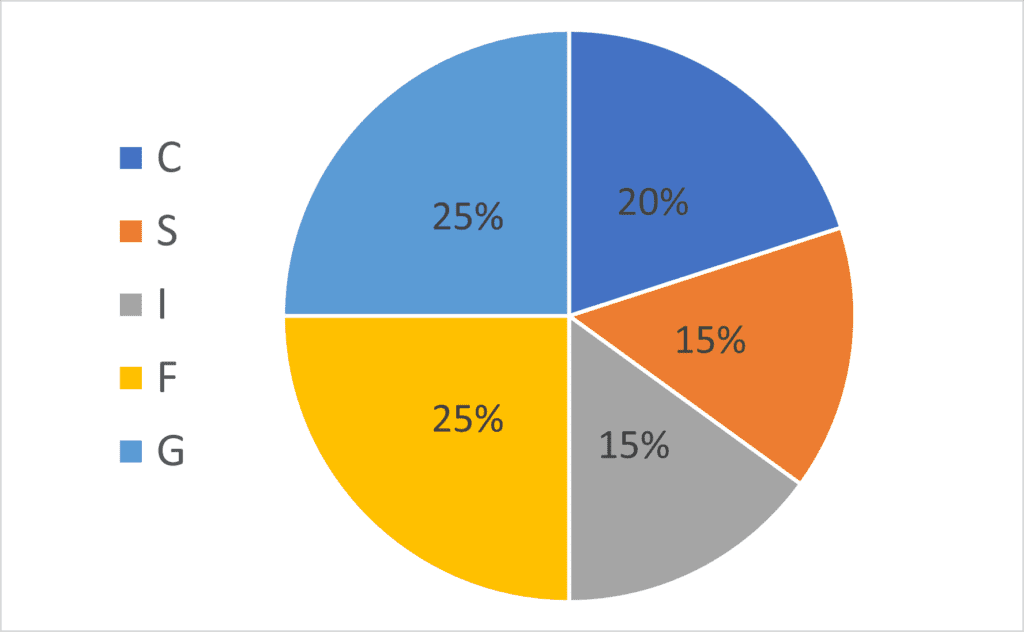
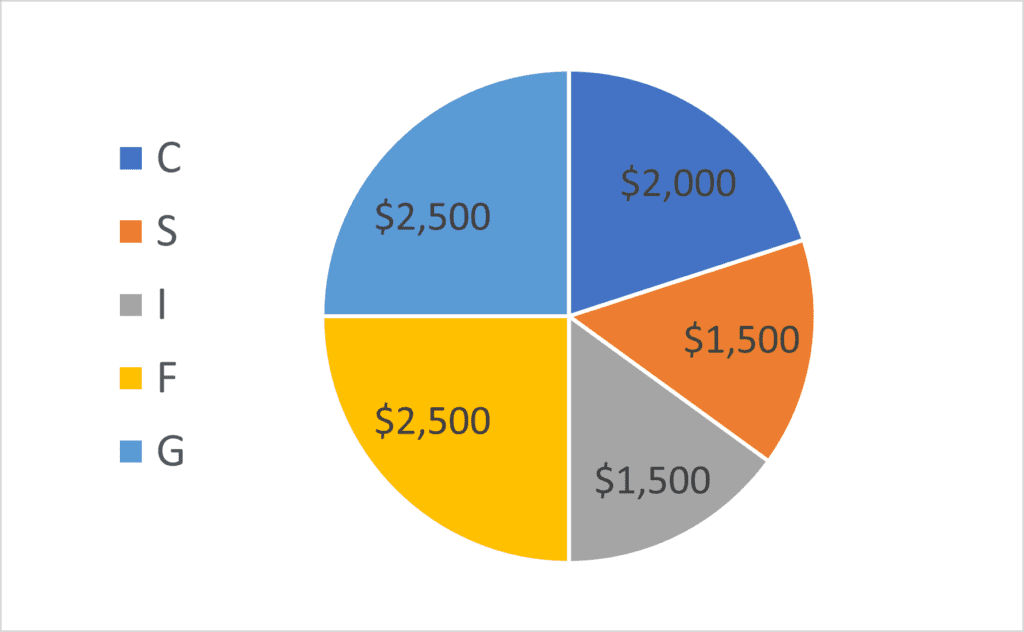
- Lifecycle funds
- The lifecycle funds are often chosen as a “set it and forget” strategy. This type of thinking can become problematic as retirement nears. As you can see below, we have included the allocation for the L Income fund, which each lifecycle fund eventually ends based on the target date chosen. The L Income fund becomes very G fund heavy and may leave your retirement nest egg falling short of inflation in the long-term.
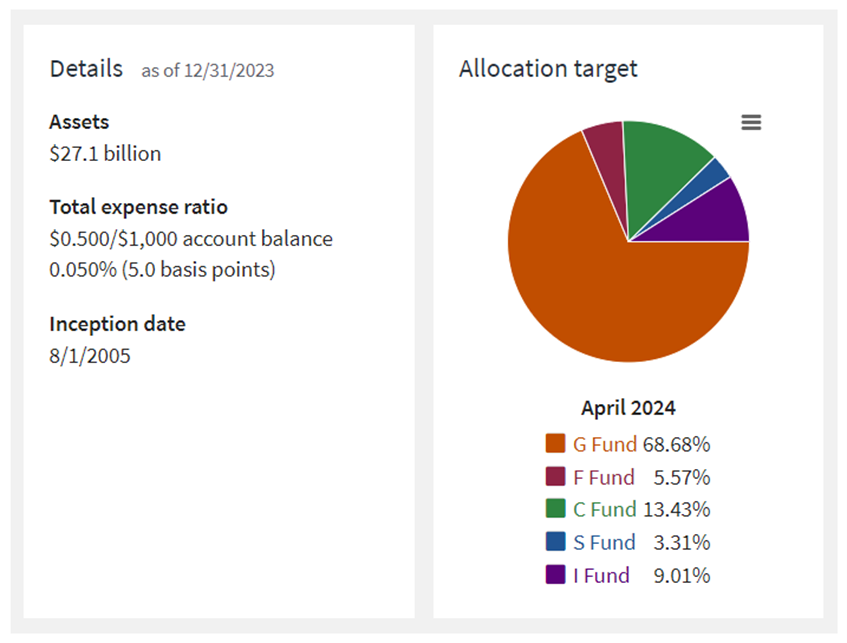
- No guidance and limited customer support
- You are on your own. TSP is unable to give guidance on your account in regards to distributions, taxes, and investment strategy.
- Beneficiary designations and inheritance process
- There are no issues if a spouse receives the TSP if you predecease him/her, but what happens when a beneficiary participant dies? The money cannot remain in the Thrift Savings Plan. The payments must be made DIRECTLY to whom the beneficiary participant has chosen. That means, the money cannot be rolled over into a beneficiary IRA. This could result in a major tax liability for the beneficiary of a beneficiary participant.
- For example, say you predecease your spouse. Your spouse receives the TSP funds into a beneficiary participant account. When your spouse passes away, the funds go to your son or daughter. In this scenario, the full amount received will be TAXABLE. This is a huge problem. The children will be unable to place these funds into an inherited IRA and could possibly be taxed at the highest tax bracket.

Summary
When you retire or leave Federal service, it is important to consider all the options available. It can be comfortable to keep the status quo, but we would urge taking the time to do the research. You have saved an entire career to get where you are now. Don’t make an uninformed decision on a big part of your financial plan.
Reach Out to Us!
If you have additional federal benefit questions, reach out to our team of CERTIFIED FINANCIAL PLANNER™ (CFP®), Chartered Federal Employee Benefits Consultants (ChFEBC℠), and Accredited Investment Fiduciary (AIF®). At PlanWell, we focus on retirement planning for federal employees. Learn more about our process designed for the career federal employee.
Preparing for a federal retirement? Check out our scheduled federal retirement workshops. Sign up for our no-cost federal retirement webinars. Make sure to plan ahead and reserve your seat for our FERS webinar, held every three weeks. Interested in having PlanWell host a federal retirement seminar for your agency? Reach out, and we can collaborate with HR to arrange an on-site FERS seminar.
Want to fast-track your federal retirement plan? Skip the FERS webinar and start a one-on-one conversation with a ChFEBC℠ today. You can schedule a one-on-one meeting using our contact page.


